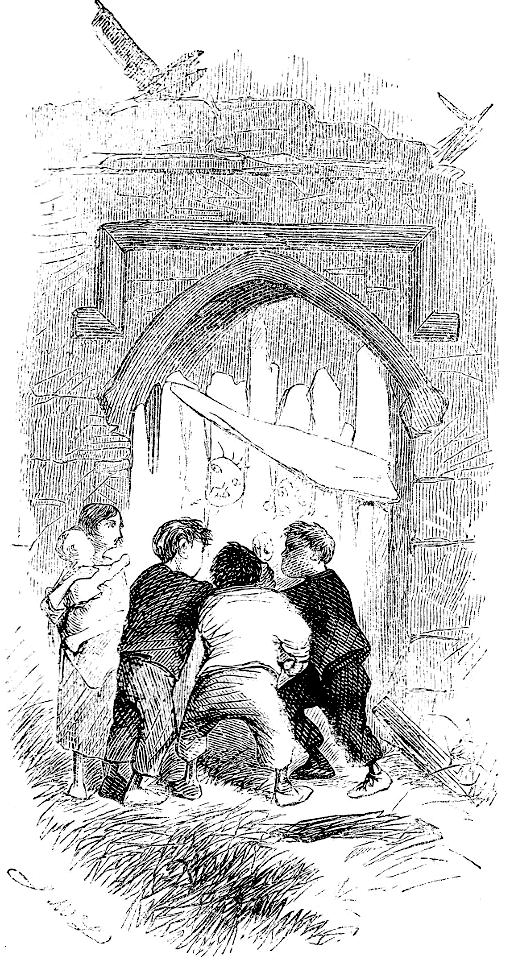Children peer into the charred vestry of the Welmington church.
John McLenan
21 July 1860
10.1 cm high by 5 cm wide (4 by 2 inches), vignetted.
Uncaptioned headnote vignette for the thirty-fourth weekly number of Collins's The Woman in White: A Novel (14 July 1860), 437; p. 219 in the 1861 volume.
[Click on the image to enlarge it.]
McLenan flags at the head of the instalment the conflagration that will result in the death of Sir Percival Glyde, who is hoist on his own petard as he has attempted to destroy the registry book, and inadvertently trapped himself in the vestry.
Scanned image and text by Philip V. Allingham.
